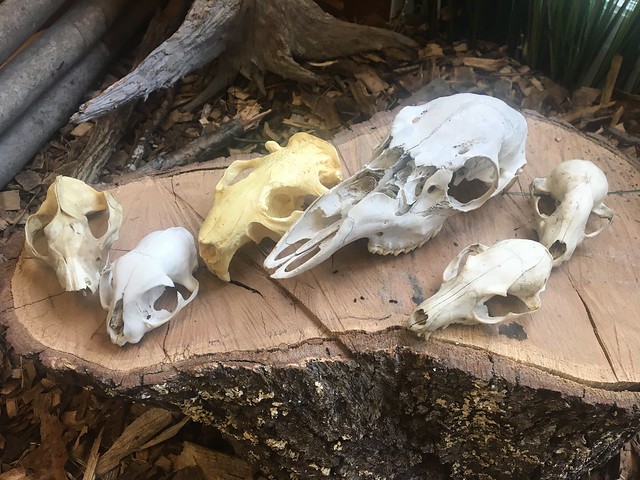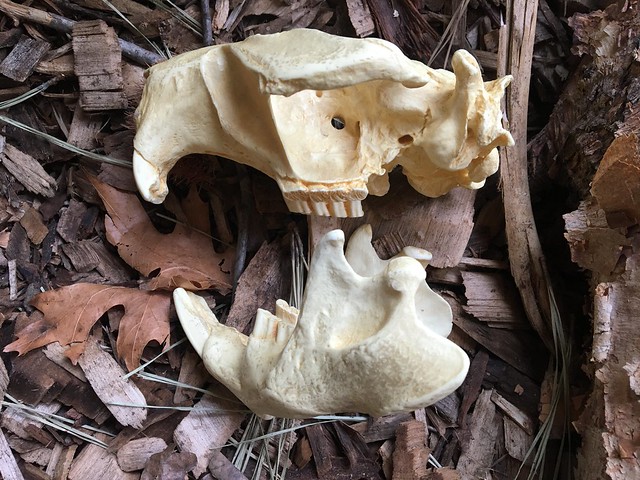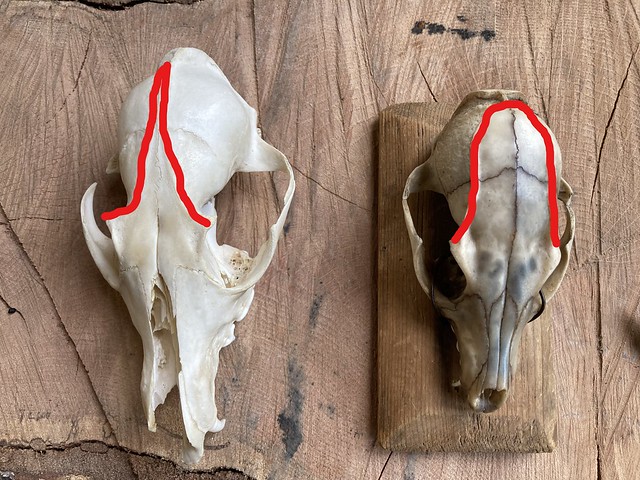Read Our Blogs
What Lies Beneath - Skull Identification Part II
Shared by Rebecca Whalen, as Guest Blogger.
Welcome back! My last blog looked at eye placement and whether animals were hunters or hiders. Now let's take a look at some more ways to identify skulls.

Skulls from left to right; opossum, bobcat, beaver, deer, gray fox, raccoon
Let's say we saw the skull below down by a lake. We look at the large, clipper-like incisors and flat molars. We know that rodents have very similar skulls. The size (5.5 inches) and location help us rule out squirrels. We see gnawed tree trunks and a large line of debris across the water. What animal do you think this skull came from? (Answer is below).

What kind of creature could this be?

Looking at the incisors lets me know this is some sort of rodent...A rodent?

Take a closer look
See the skull above? It has two upper and lower incisors, no canines, one premolar and three molars. Ten teeth on the top, ten on the bottom. Now can you identify this skull? If you guessed beaver, you are correct!
Now let's take a look at our canine collection. Canines are carnivores that prey on a wide variety of animals, large and small, though some also eat carrion and vegetable matter.

Our "canine collection" - coyote, red fox, gray fox

Red Fox and Gray Fox, but which is which?
These fox skulls are very similar, but can you tell their key identifying feature?

The Red fox has a "V" shaped ridge on the top of its skull, while the Gray fox has a "U" shaped ridge.

Opossum
Besides its 50 teeth, the most identifying feature on the Opossum skull is this high ridge, also called a "sagittal crest."
As I said in Part I, finding a good guidebook is important. While there are unlimited resources on the internet, I prefer a good, old-fashioned book (along with a ruler, a pencil, and some scratch paper). The dichotomous key can be a bit much for some, so I've created an easy guide to help you narrow down your choices if you ever happen upon a skull in the future. Please email me at Rebecca.Whalen@dcr.virginia.gov for a free copy.
Please remember, while it's fun to look and identify,
removing a skull from a Virginia State Park is not allowed.
Find more information on your Virginia State Parks. Happy adventures!
If you have read the article and have a question, please email nancy.heltman@dcr.virginia.gov.














